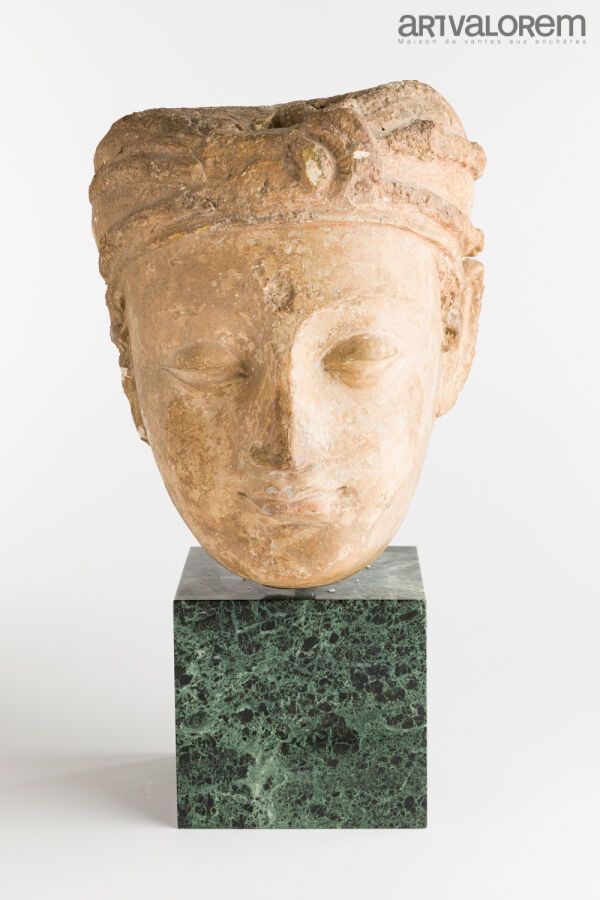Description
GANDHARA, 4th - 5th century, Hadda region. Bodhisattva head with half-closed eyes between which the urna is marked. The wavy hair is held back by a headband. Part of the central jewel that decorated it is still visible. The eyes with half-moon shaped lids are surmounted by arched eyebrows that extend to the tip of the nose. The mouth with its fleshy lips sketches a light smile. A soothing softness emanates from this face. Stucco with traces of polychromy. Height: 31 cm - Depth: 26 cm (Restorations) Provenance: Collection of Professor Jean Barbet, posted in Afghanistan from 1953 to 1956. Photo of the period below.
109
GANDHARA, 4th - 5th century, Hadda region. Bodhisattva head with half-closed eyes between which the urna is marked. The wavy hair is held back by a headband. Part of the central jewel that decorated it is still visible. The eyes with half-moon shaped lids are surmounted by arched eyebrows that extend to the tip of the nose. The mouth with its fleshy lips sketches a light smile. A soothing softness emanates from this face. Stucco with traces of polychromy. Height: 31 cm - Depth: 26 cm (Restorations) Provenance: Collection of Professor Jean Barbet, posted in Afghanistan from 1953 to 1956. Photo of the period below.
You may also like
